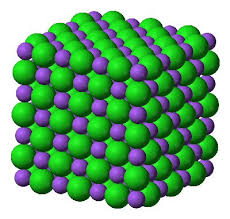When different elements react, atoms form chemical bonds with other atoms to form compunds.
-Making bonds involves atoms going away, taking or sharing electrons. (Only the elctrons are involved)
-The properties of a compound are totally different from the original elements.
-Compounds can be small molecules of water, or lattices like sodium chloride.
MIXTURE -----heat----> COMPOUND

Comments
No comments have yet been made